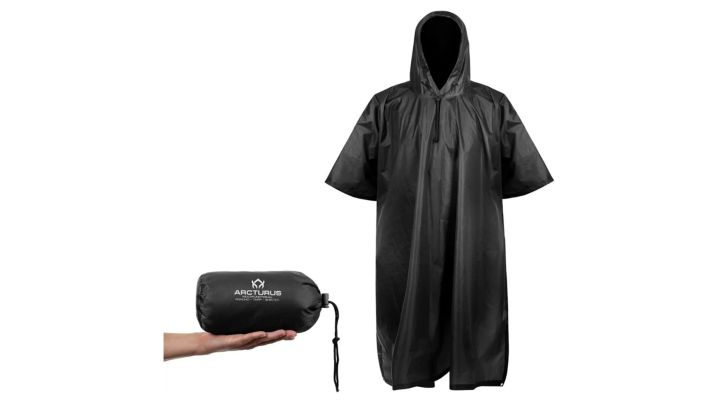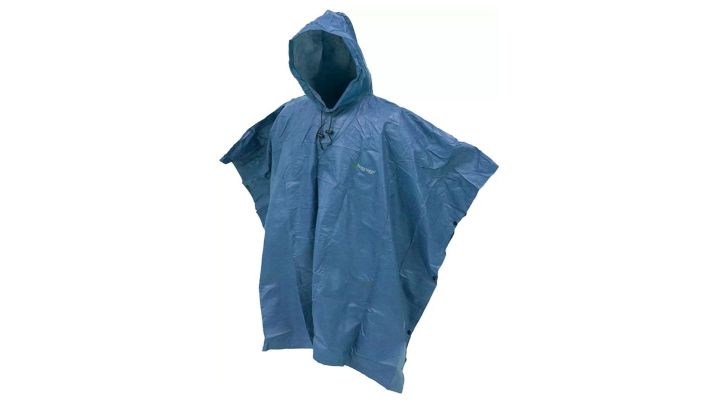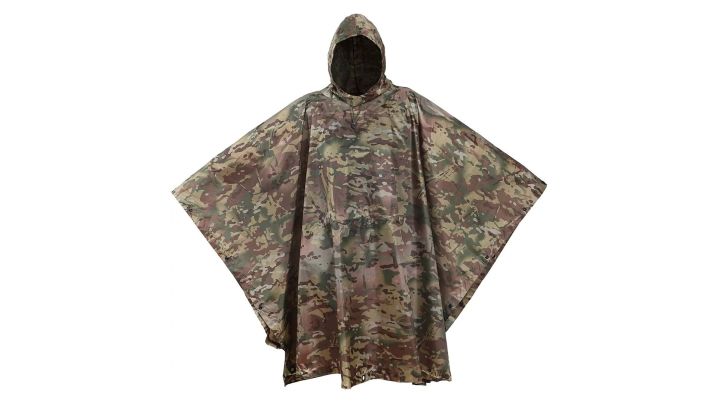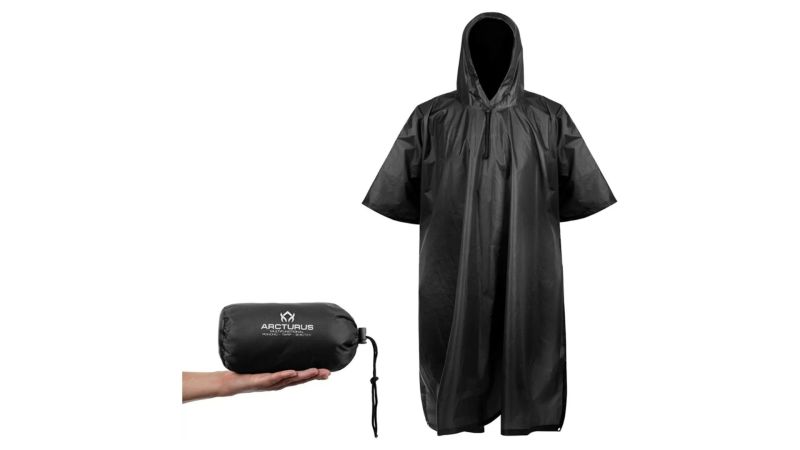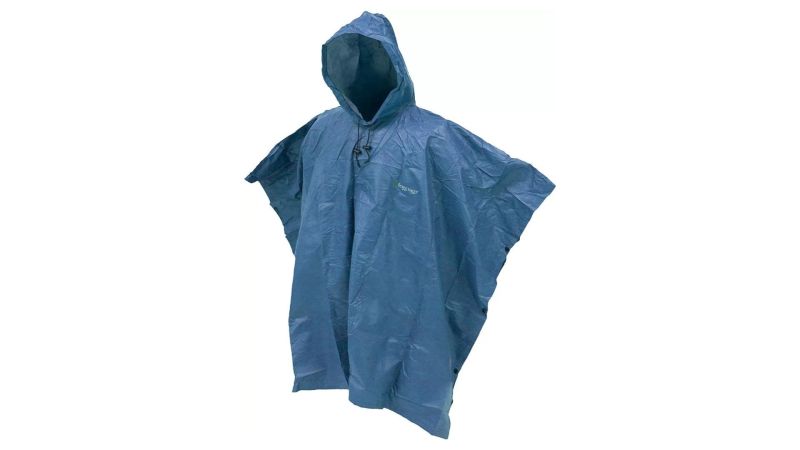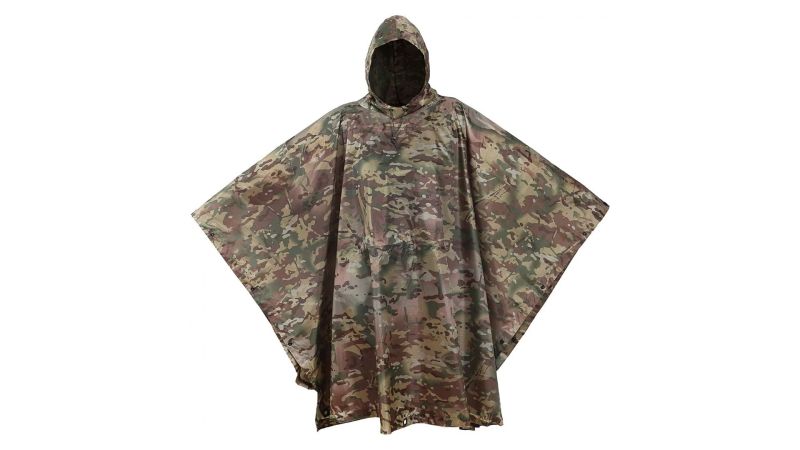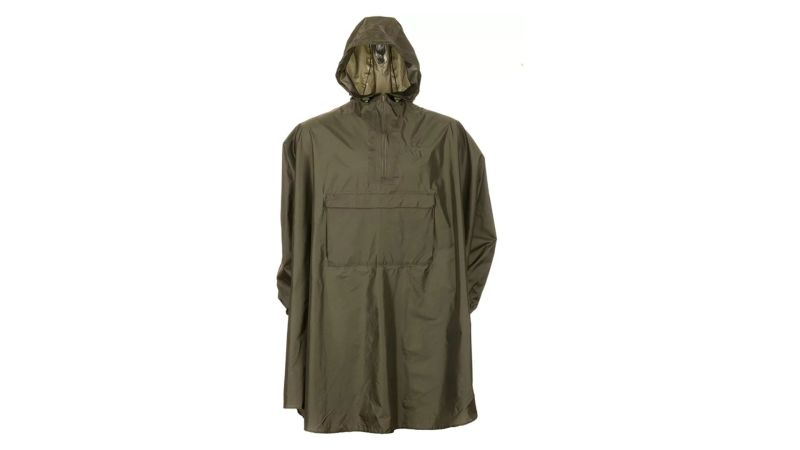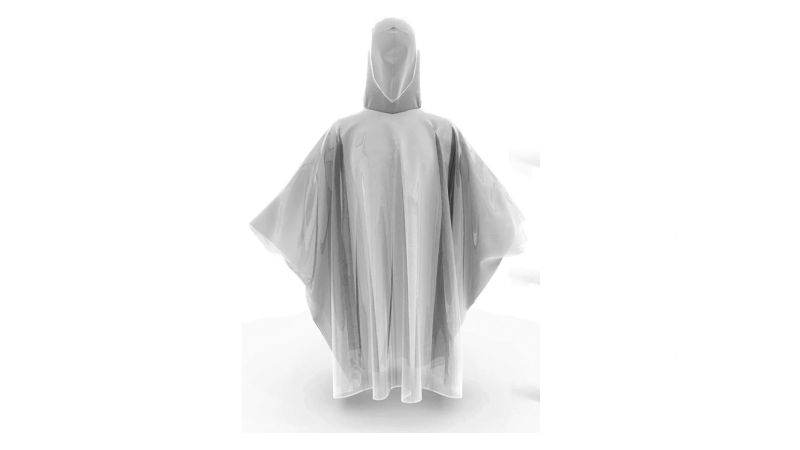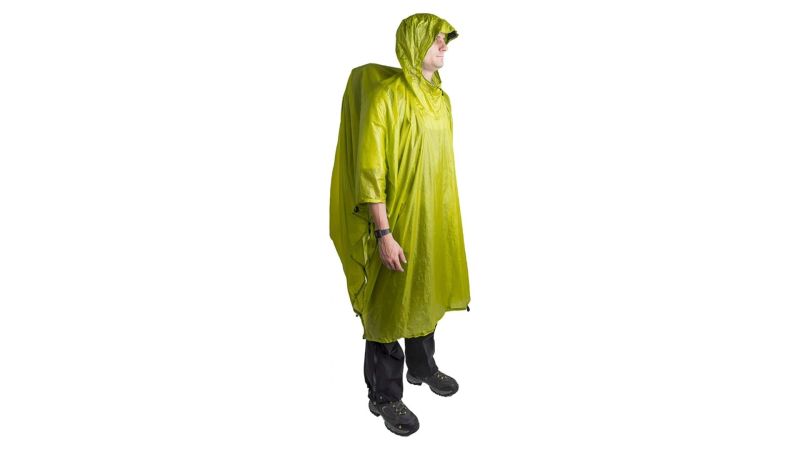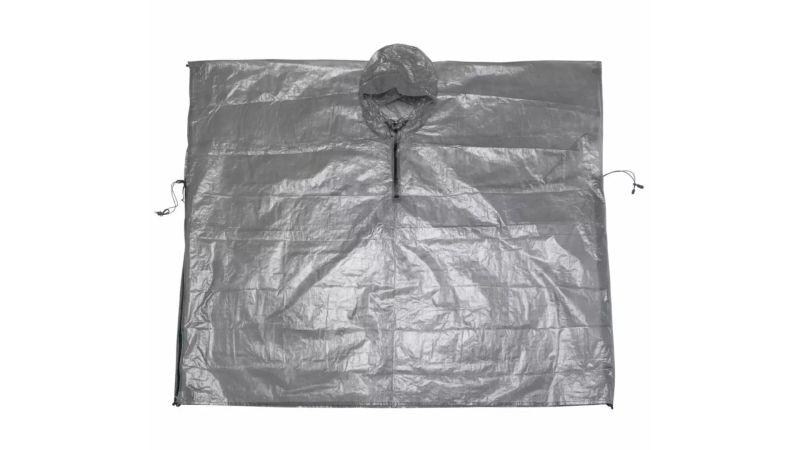We may earn revenue from the products available on this page and participate in affiliate programs.
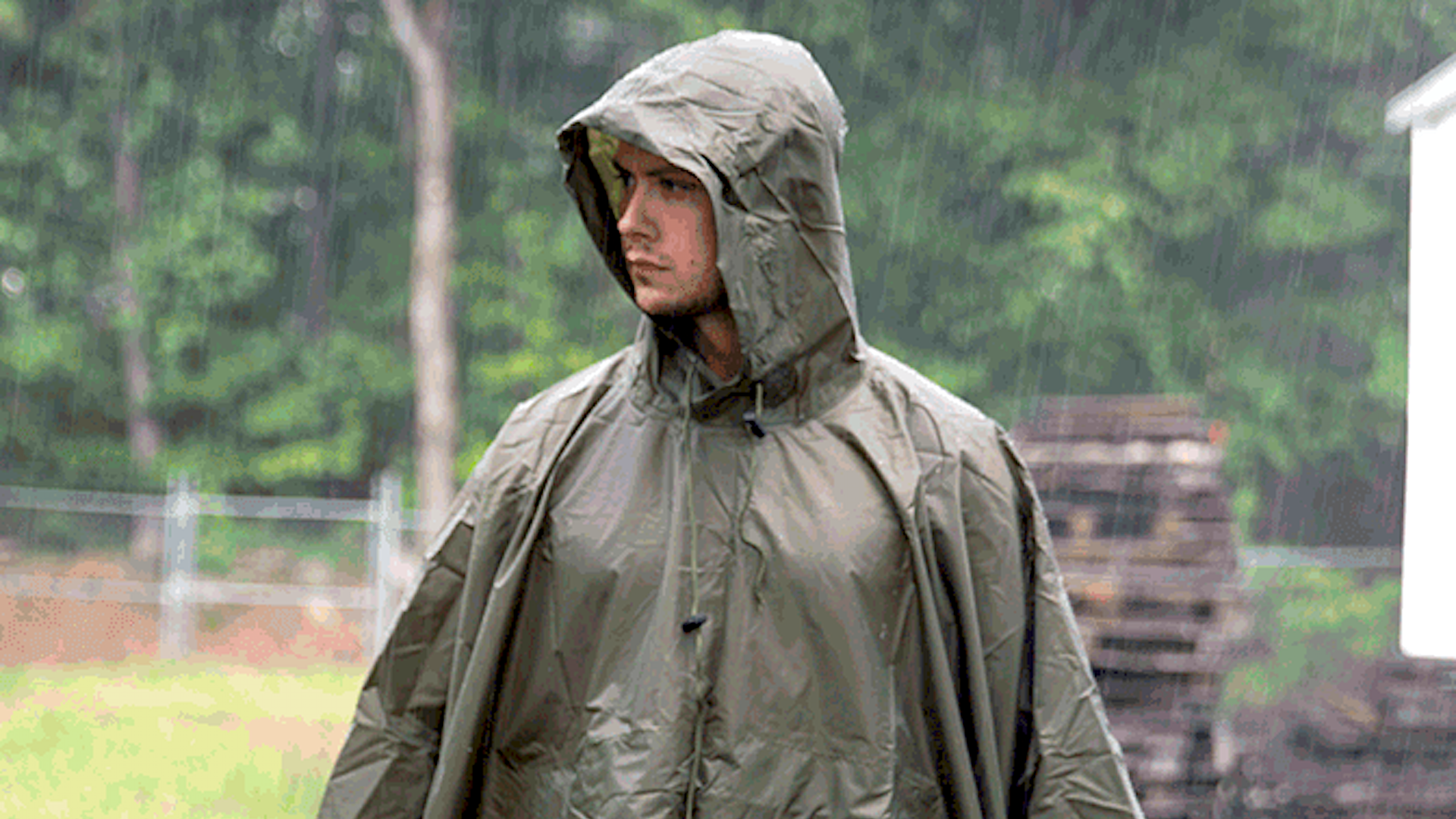
The waterproof poncho is the go-to defense against rain for military, hunters, backpackers, and soccer moms and dads alike, and for good reason. The best ponchos are light, easy to transport, provide protection against the elements for a large part of your body, and are simple to put on and take off. But it may come as a surprise that, depending on your outdoor activity, some ponchos are better choices than others.
The best ponchos are waterproof, and many are truly flexible and multifunctional. Need to keep the kiddos dry at a concert or baseball game? Put on a poncho. Backpacking, and find yourself in need of a quick shelter? Use a poncho to make a tent. Find that your regular tent is resting on some particularly soggy ground? Lay out your poncho as a ground sheet. This guide will help you match your weather protection needs to the poncho that will suit you best.
- Best Overall: Arcturus Lightweight Ripstop Nylon Rain Poncho
- Best Value: Frogg Toggs Ultra Lite2
- Honorable Mention: USGI Industries Military Style Poncho
- Best for Hiking: Snugpak Patrol Poncho
- Best Disposable: Hagon PRO Disposable Rain Ponchos
- Best for Travel: Sea to Summit Ultra-Sil Nano Tarp Poncho
- Best Lightweight: Zpacks Groundsheet Poncho
Methodology
The process we use to recommend the absolute best products relies on a mix of our team’s personal experience, external expert opinions, product research, and user reviews. I’ve pointed out in previous guides that I’ve spent a lot of time doing outdoor activities like camping, backpacking, and hiking, so I’ve had to plan for all sorts of weather contingencies.
The fundamental job of a poncho is to protect the wearer from rain, so that was the starting point for inclusion in this list. Durability and functionality were also considered, but were weighted differently depending on the category (e.g., the best disposable poncho didn’t have to impress me with multifunctional capabilities, while the best lightweight poncho didn’t have to be the most durable).
As I narrowed down the contenders, I compared my list to other “best of” poncho lists. Gearassist.com, Camotrek.com, and Backpackers.com all have well-reviewed lists that helped quite a bit. After reviewing their lists, I carefully reviewed product pages from both the manufacturers and on Amazon. As usual, only products with an overwhelming percentage (greater than 70 percent) of positive reviews (four or five stars) could make the cut. For more information, check out the Task & Purpose editorial guidelines.
Best Overall
Arcturus Lightweight Ripstop Nylon Rain Poncho
Best Value
Frogg Toggs Ultra Lite2
Honorable Mention
USGI Industries Military Style Poncho
Best for Hiking
Snugpak Patrol Poncho
Best Disposable
Hagon PRO Disposable Rain Ponchos
Best for Travel
Sea to Summit Ultra-Sil Nano Tarp Poncho
Best Lightweight
Zpacks Groundsheet Poncho
Our verdict on the best rain ponchos
Despite the relatively straightforward function of the poncho, there are a variety of products to choose from to meet your specific needs. The Arcturus Lightweight Ripstop Nylon Rain Poncho brings the best of all worlds together into a single product, and can fill almost any role needed at a reasonable price. But if you don’t really need the multifunctionality of the Arcturus or similar rain shells, then the Frogg Toggs Ultra Lite2 is almost certainly the way to go.
What to consider when buying a rain poncho
As with most outdoor kits, you really want to consider what you need your poncho to be capable of before you purchase it. If all you need is protection from rain while outside, like at a sports event or doing labor, then you can safely buy a lower-end poncho that leaves out things like adjustable waists, snap buttons, reinforced grommets, and the like that make the poncho a more versatile tool. If you need something more durable but don’t plan on carrying large backpacks, then well-made but functionally simple ponchos like the Frogg Toggs Ultra Lite2 will suit you well. It’s when you want to be able to get more out of your rain gear, like the ability to use it for a shelter, that you’ll want to do more research to ensure you get what you pay for.
Types of rain poncho
Disposable
A disposable rain poncho is essentially a sheet of waterproof material with a hood. It’s functional and provides ample protection, but isn’t designed to do much else. You can get a few uses out of these, which may be all you need, but eventually, it’ll tear as it’s not made to last.
Basic
Like the disposable poncho, these ponchos are water-resistant or waterproof shells that you wear when needed. The arms are usually covered mid-way to provide ease of movement, and most will have buttons to allow you to close the sides somewhat to protect you from the wind. That’s pretty much it. These are durable enough to last you a while, but if you tend to wear them under a backpack, then they may wear through over time.
Multi-functional
These are rain shells that have been designed to take advantage of having a large sheet of waterproof material while you’re in remote areas. These are typically either made of thicker material or exotic lightweight material like Dyneema, that will protect from wind and rain but can be stretched underneath you or over you as a tarp tent. These will typically have reinforced grommets that will support trekking poles or 550 cord so you can set up your shelter.
Key features of a rain poncho
Waterproofing
All rain ponchos afford some level of protection from precipitation, but not all are great for prolonged periods of heavy downpours. If it’s not waterproof rated, make sure it’s at least water-resistant to 1,200mm or higher. There is no industry standard of what is considered “waterproof” but fabrics with over 1,000mm of resistance start to provide a decent level of rain protection, and the higher you go, the more protection you’ll get.
Size
Most people don’t like to dress up like a cheap plastic Jedi, so the poncho is designed to look like it does for a reason. The length and width are geared to cover you at a minimum. But many are made with extra length in order to cover backpacks as well. If you’re not planning on hiking or carrying gear (and you’re not super tall), then something under 80 inches total length (40 inches on one side) is fine. But if you need more material to cover your pack, look for something over 80 inches.
Drawstrings and buttons
The most basic of ponchos won’t have these, and you may not know what you’re missing. However, hood and waist drawstrings and side buttons are a great way to keep control of all the poncho in inclement weather, particularly when it’s windy outside. By using these, you can adjust the amount of material you have flapping in the wind, and make the use of the poncho a bit more comfortable.
Rain poncho pricing
The good news is that there are a large variety of waterproof ponchos that do a great job protecting you from rain that don’t cost a lot of money. But like any outdoor gear, there is higher-quality, and in some cases exotic, materials that can push the price up pretty quickly. Lower-priced ponchos tend to be made of simple PE plastics or polyester, and you can expect to pay below $20 (much lower if you buy something disposable). As you go higher in price, up to the $60 range, materials are more durable, like ripstop woven fabrics, that allow the poncho to endure more rigorous use. Once you pass $60, you’ll likely be in the more exotic range, where ultralight designs and materials are often part of a tent or hammock system.
Tips and tricks
As with something you do for decades upon decades, you pick up a few tips and tricks along the way in terms of selecting the right product, and/or using it. That’s the case with us and ponchos. To help you bridge the information gap, here’s a selection of what we’ve learned along the way.
- Ponchos are almost all poorly insulated, but you can buy a separate poncho liner for cold weather. These also make nice blankets or emergency sleeping bags.
- If backpacking, keep your poncho in an easily accessible pocket so you’re not digging through stuff to find it in a sudden downpour.
- Some 550 cord can turn almost any poncho into a lean-to shelter. Always have 550 cord when backpacking.
- Don’t overthink this. If you just need a poncho for a car emergency kit, the disposable ones are all you need.
FAQs about rain ponchos
You’ve got questions, Task & Purpose has answers.
Q: Which is better, a raincoat or poncho?
A: This totally depends on your intended use. If you know you’re going to be in rainy conditions for extended periods, go with a raincoat. If you want something easily donned for sudden rain, the poncho is the way to go.
Q: What is the best poncho material?
A: This depends on how much you want to spend. While exotic materials like Dyneema are light and waterproof, most won’t spend that much. Look for durable materials (e.g., ripstop nylon) that don’t feel like a trash bag on your skin.
Q: Do rain ponchos keep you warm?
A: In the winter, with a liner, yes. In the spring and summer, ponchos can make you too warm as they tend to trap in heat, so look for designs that help you vent that heat.
Q: What is the difference between a serape and poncho?
A: A serape is a cool-looking blanket-like garment that originated in Mexico. The poncho originated in South America and has a slit for the head. Modern ponchos are usually used for foul weather.
